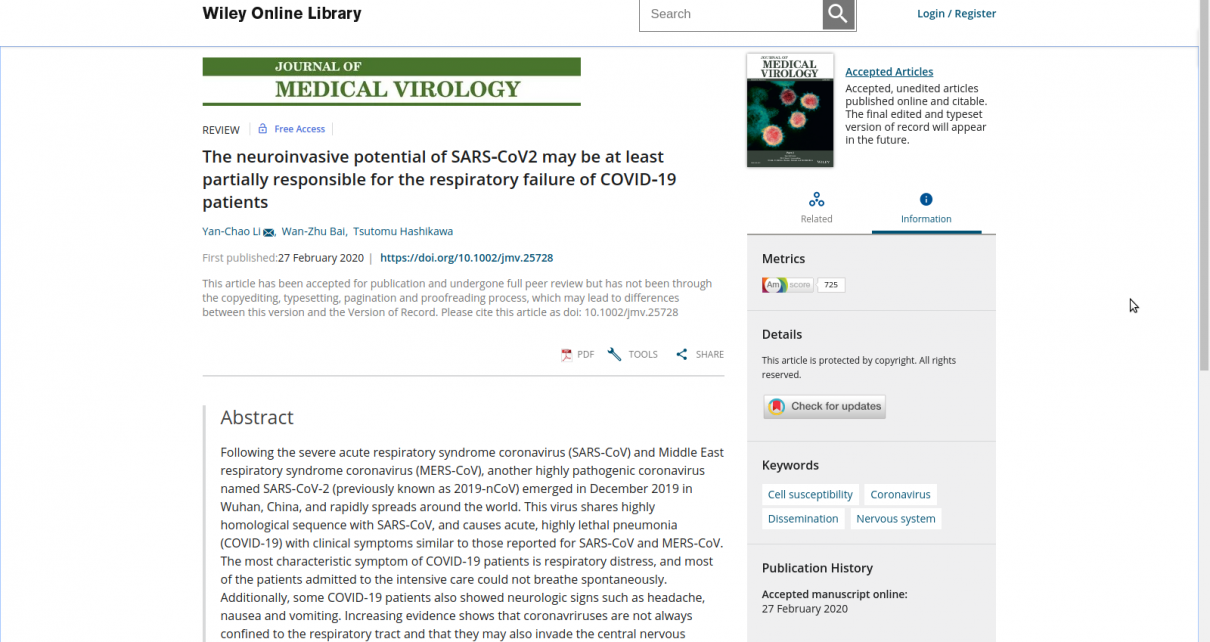Peer Reviewed
Abstract
Following the severe acute respiratory syndrome coronavirus (SARS‐CoV) and Middle East respiratory syndrome coronavirus (MERS‐CoV), another highly pathogenic coronavirus named SARS‐CoV‐2 (previously known as 2019‐nCoV) emerged in December 2019 in Wuhan, China, and rapidly spreads around the world. This virus shares highly homological sequence with SARS‐CoV, and causes acute, highly lethal pneumonia (COVID‐19) with clinical symptoms similar to those reported for SARS‐CoV and MERS‐CoV. The most characteristic symptom of COVID‐19 patients is respiratory distress, and most of the patients admitted to the intensive care could not breathe spontaneously. Additionally, some COVID‐19 patients also showed neurologic signs such as headache, nausea and vomiting. Increasing evidence shows that coronavriruses are not always confined to the respiratory tract and that they may also invade the central nervous system inducing neurological diseases. The infection of SARS‐CoV has been reported in the brains from both patients and experimental animals, where the brainstem was heavily infected. Furthermore, some coronaviruses have been demonstrated able to spread via a synapse‐connected route to the medullary cardiorespiratory center from the mechano‐ and chemoreceptors in the lung and lower respiratory airways. In light of the high similarity between SARS‐CoV and SARS‐CoV2, it is quite likely that the potential invasion of SARS‐CoV2 is partially responsible for the acute respiratory failure of COVID‐19 patients. Awareness of this will have important guiding significance for the prevention and treatment of the SARS‐CoV‐2‐induced respiratory failure. (229 words)
Publication History
- 27 February 2020
READ:



